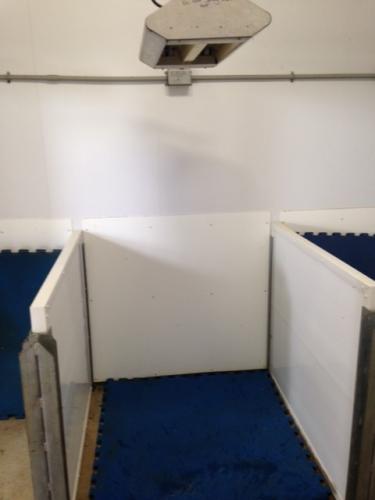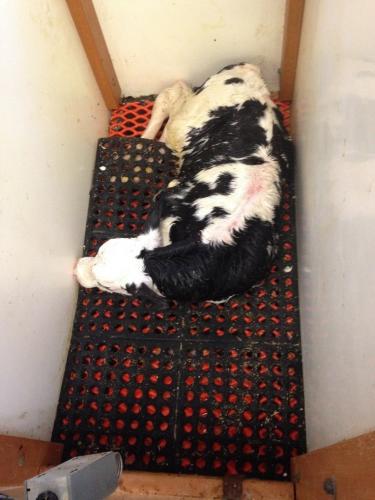Warming rooms for newborn dairy calves
Producers are finding health advantages to placing newborn calves in a warm environment where they can be quickly dried and cared for during their first few hours.
The past few winters have brought extreme temperatures to Michigan, forcing many dairy producers to invest in alternative methods of keeping newborn calves warm. Newborn dairy calves are born with only 2-4 percent body fat, which will not sustain them long if a wet calf is exposed to sub-freezing temperatures. To protect against frost during extreme cold temperatures, newborn calves must be dried off as soon as possible. The ears most commonly experience frostbite; however, the nose and feet are easily affected as well.
Producers are finding health advantages to placing newborn calves in a warm environment where they can be quickly dried and cared for during their first few hours. Commercial warming boxes are available where a single calf can be housed and many variations of homemade boxes or rooms can get the job done on larger farms.
If you are considering building your own warming room, Michigan State University Extension offers a few tips to think through. Many of these tips apply to warming boxes as well.
Ventilation
Don’t underestimate the ventilation needs for an enclosed space housing wet calves that are urinating and defecating! Without proper ventilation, calves will not dry properly, and air quality will become poor enough that people and animals should not be inside.
Ease of cleaning
It is essential that newborn calf housing can be cleaned and sanitized frequently. Carefully consider how flooring and walls can be cleaned if there is a steady flow of calves. If there is not a drain in the floor, then cleaning with water can become a challenge. Two rooms may be necessary so that one location can be totally cleaned out and dried while the other is in use. Without proper management and sanitation, warming rooms and boxes will quickly become a contaminated environment and present a significant disease risk to calves.

A warming room with individual stalls, easy to clean rubber mats and a radiant heater on a timer.
Length of time calves will stay in the room
Farms vary widely on how long newborn calves are left in a warming room. The minimum length of time to leave a calf in the room or box is until the calf is completely dry (a few hours), and at maximum a few days. Depending on the set up, either situation can work well. If calves are group housed in the warming room, then they should be moved out shortly after they are dry to avoid cross-contamination.
Size
The space necessary for your room will depend on the maximum number of calves that will be housed in the room and how long calves stay in the warming room. There needs to be enough space for all calves to comfortably lie down.

An individual warming box with rubber mats and a thermostat.
Heat Source
Heat lamps can be used to warm calves, but carry a fire risk and do not move air around. Space heaters can be considered if the space is small. Radiant heaters with a fan work well and dry calves quickly. Ideally, set the radiant heater on a timer or thermostat to avoid over-heating calves.
Bedding
There are many options for bedding in warming rooms or boxes. Absorbent bedding such as shavings work well in group housing if there are no floor drains. Consider how the bedding will be cleaned out if there is not a large enough door for equipment, such as a skid loader, to enter. Rubber mats that can be easily cleaned work well on flooring with a drain.

A group housing warming room with straw bedding.
Animal Handling
For worker convenience, consider what tasks will be done in the warming room. Shelving or hooks to store equipment for ear tagging or feeding colostrum may come in handy.
Warming rooms and boxes can save calves during extreme temperatures, however be sure to keep them clean to avoid spreading disease to the most vulnerable animals on the farm.



 Print
Print Email
Email




